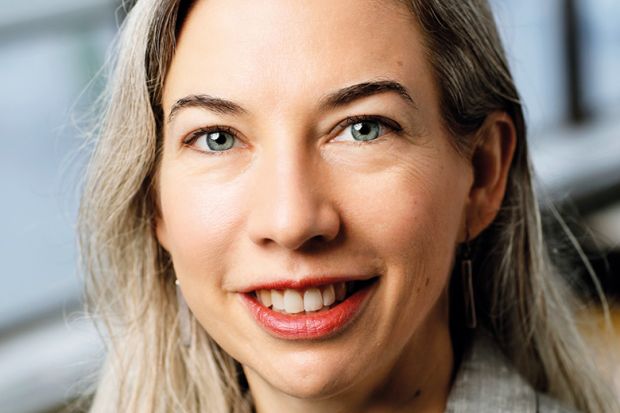What sorts of books inspired you as a child?
As the daughter of an English teacher, we talked about books constantly at home. I read and loved a lot of the classics, from Greek myths to J. R. R. Tolkien, with Little Women thrown in on the side. I was drawn to mysteries of all sorts, especially those that revolved around preserving young people: E. L. Konigsburg’s From the Mixed-up Files of Mrs. Basil E. Frankweiler, Frances Hodgson Burnett’s The Secret Garden, Madeleine L’Engle’s A Wrinkle in Time series and even the Nancy Drew books. As a teen, thanks to my mum, I started to understand the transformative work that imaginative fiction could do. Toni Morrison’s Beloved was a turning point in my reading, as was Marion Zimmer Bradley’s feminist retelling of the Arthurian Legends, The Mists of Avalon.
Your new book, ‘Haunted Bauhaus’, explores some of the neglected aspects of a celebrated institution. Which books first piqued your interest in the Bauhaus?
Magdalena Droste’s Bauhaus, which has just been reissued. I’m also a fan of Éva Forgács’ The Bauhaus Idea and Bauhaus Politics.
What sources first alerted you to the occult, queer and other ‘untold’ aspects of its history?
Haunted Bauhaus took more than 15 years to gestate. While researching at the Bauhaus-Archiv (BHA) in Berlin in the late 1990s, I quickly learned how misunderstood the movement was, especially in English-language accounts. I kept stumbling across the work of unknown women in the archive and, sometimes, in a small-print-run catalogue or a master’s thesis held in the library. During work for my exhibition and catalogue Tempo, Tempo! The Bauhaus Photomontages of Marianne Brandt, I realised that Brandt was one of many women still waiting to be integrated into the Bauhaus’ history. It was also at the BHA that the alternative spiritualities material came into focus. In 2004, Klaus Weber told me about his research for a forthcoming exhibition catalogue, Das Bauhaus und die Esoterik, edited by Christoph Wagner. Finding queer Bauhaus members took a fair bit of tenacity…
Which earlier books have offered useful models for ‘queering’ accounts of well-known institutions seldom analysed in that way before?
I was always most interested in feminist gender studies approaches to art history. In college, I read the work of Jonathan Katz, who is now my colleague and friend. His queer interpretations of Jasper Johns and Robert Rauschenberg’s work made mid-century American painting come alive for me. I still teach Andrea Weiss’ Paris Was a Woman: Portraits from the Left Bank more than 20 years after it came out because it allows students to see a much richer and more diverse cultural landscape in early 20th-century Paris than male-dominated histories of Cubism give us. Other models were Tirza True Latimer’s Eccentric Modernisms: Making Differences in the History of American Art, Laurie Marhoefer’s Sex and the Weimar Republic: German Homosexual Emancipation and the Rise of the Nazis and Richard Meyer’s Outlaw Representation: Censorship and Homosexuality in Twentieth-Century American Art.
What is the last book you gave as a gift, and to whom?
I gave my husband a copy of Patrick DeWitt’s The Sisters Brothers. He loves landscapes, westerns and irony. It’s perfect!
What books do you have on your desk waiting to be read?
Michael Tymkiw’s Nazi Exhibition Design and Modernism, John Blakinger’s Gyorgy Kepes: Undreaming the Bauhaus and Theresia Enzensberger’s Bauhaus novel Blueprint. But first I have to finish Jill Lepore’s engaging, brutal and, I think, essential history of the United States, These Truths.
Elizabeth Otto is associate professor of art history and visual studies (and executive director of the Humanities Institute) at the University at Buffalo (SUNY). Her latest book is Haunted Bauhaus: Occult Spirituality, Gender Fluidity, Queer Identities, and Radical Politics (MIT Press).
后记
Print headline: Shelf Life: Elizabeth Otto




